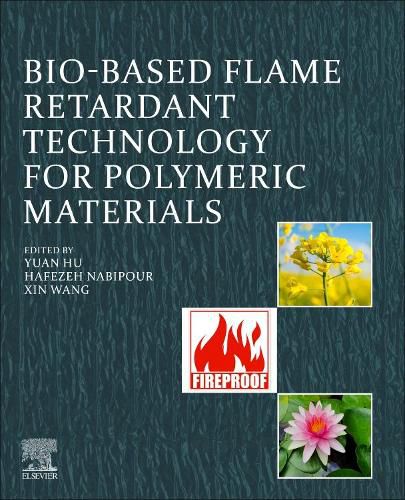Readings Newsletter
Become a Readings Member to make your shopping experience even easier.
Sign in or sign up for free!
You’re not far away from qualifying for FREE standard shipping within Australia
You’ve qualified for FREE standard shipping within Australia
The cart is loading…






Bio-Based Flame Retardants for Polymeric Materials provides a comprehensive overview of flame retardants derived directly and indirectly from plant sources, drawing on cutting-edge research and covering preparation methods, testing and evaluation techniques, enhanced properties, and end applications. Chapters introduce bio-based materials in the context of additives for flame retardancy, explaining fundamentals and testing methods and analyzing synthetic approaches and the potential advantages of pursuing a bio-based approach. This is followed by detailed coverage of bio-based retardants, with each chapter covering a specific source and guiding the reader systematically through preparation techniques, evaluation methods, properties and applications.
Throughout the book, the latest progress in the field is critically reviewed, and there is a continual emphasis on novel approaches to achieve enhanced properties and performant materials. This is an essential guide for all those with an interest in innovative, sustainable flame retardant additives for polymeric materials, including researchers, scientists, advanced students, and more.
$9.00 standard shipping within Australia
FREE standard shipping within Australia for orders over $100.00
Express & International shipping calculated at checkout
Bio-Based Flame Retardants for Polymeric Materials provides a comprehensive overview of flame retardants derived directly and indirectly from plant sources, drawing on cutting-edge research and covering preparation methods, testing and evaluation techniques, enhanced properties, and end applications. Chapters introduce bio-based materials in the context of additives for flame retardancy, explaining fundamentals and testing methods and analyzing synthetic approaches and the potential advantages of pursuing a bio-based approach. This is followed by detailed coverage of bio-based retardants, with each chapter covering a specific source and guiding the reader systematically through preparation techniques, evaluation methods, properties and applications.
Throughout the book, the latest progress in the field is critically reviewed, and there is a continual emphasis on novel approaches to achieve enhanced properties and performant materials. This is an essential guide for all those with an interest in innovative, sustainable flame retardant additives for polymeric materials, including researchers, scientists, advanced students, and more.